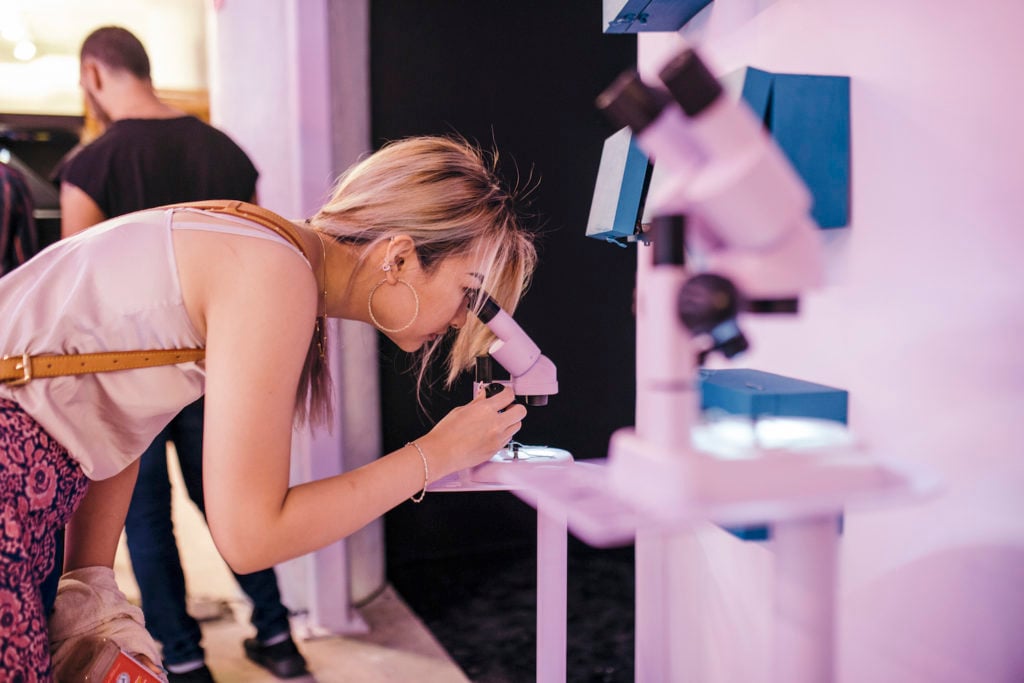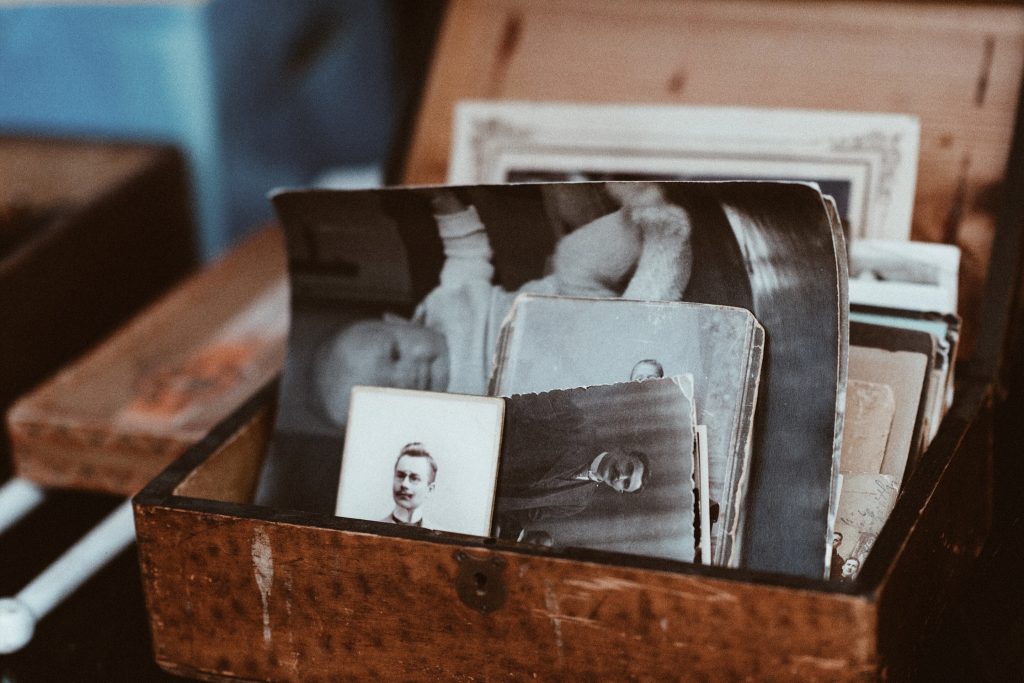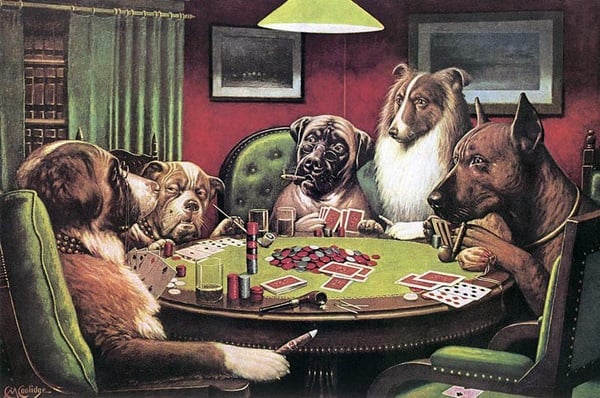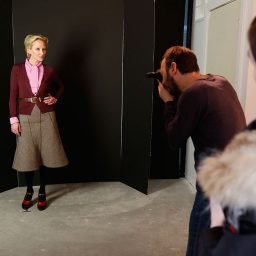Have you ever wondered what your rights are as an artist? There’s no clear-cut textbook to consult—but we’re here to help. Katarina Feder, a vice president at Artists Rights Society, is answering questions of all sorts about what kind of control artists have—and don’t have—over their work.
Do you have a query of your own? Email [email protected] and it may get answered in an upcoming article.
I was recently at a horse show where a friend of a friend brought a puppy that she was trying to sell with her. I took several pictures of the puppy and subsequently used my reference photos to create an artwork. I just received an inquiry from the woman who was selling the puppy asking me if I should have gotten her permission to photograph her dog and then make an artwork from it. To further complicate matters, the new owner of the puppy wanted to buy a print of the artwork, but then stated that I should give it to her for free. I said that I would be happy to give her a print, but I don’t want this person coming back and demanding that she get a cut of the sales of the original artwork or other prints.
When I use a photograph that someone else has taken as a reference, I always ask permission. But do I need to get permission from the owner of an animal, when I take my own photo of the animal and use it as a reference for my own artwork?
Look, I’m a millennial, so I completely understand the impulse to treat a puppy like it’s a child. I certainly treat my own as such. But no matter what the subway ads try to tell us, dogs are not children. I don’t think you owe either of these women anything.
I say that they’re treating this dog like a child because their concerns seem grounded in a vague sense of the intellectual property law that we call right of publicity or right of personality. These are the state-by-state laws that prevent people from profiting off Emily Ratajkowski’s image without her approval. They’re taken seriously when it comes to children, especially in New York, where such protections are written into our civil rights laws, though something tells me you might be writing from Connecticut.
The best example of a right of publicity case, in my opinion, is the 2003 decision that decreed that a 1997 lithograph of Tiger Woods was “informational and creative” and therefore protected by the First Amendment, and not merely off-license Woods merchandise, which was what Woods and his lawyers had alleged.
Let’s apply this to your circumstance. You weren’t taking photographs of the puppy because he’s a famous puppy, nor did you make your artwork to profit off this puppy’s leagues of fans. You did it to be creative. I would guess that you took many photographs at the horse show and probably didn’t even know which one you were going to use for the artwork before you started on it.
Moreover, dogs do not have publicity rights. The famous free speech and copyright thinker Melville Nimmer even pointed this out explicitly in a 1954 article entitled “The Right to Publicity.” Citing the case Lawrence v. Ylla, Nimmer said that while the name and character of Lassie might be valuable IP when used to promote dog food, “the right of privacy ‘does not cover the case of a dog or a photograph of a dog.’” Since then, we’ve seen a successful lawsuit on behalf on Nyan Cat and Keyboard Cat, but that seems to have been more of a trademark thing. (Nyan Cat is… not a real cat.)
You own the copyright to the photograph and you own the copyright to the artwork. If you want to give copies to the dog’s owner and seller, you should be clear that it’s a gesture of goodwill, not an admission of wrongdoing.

The Microscope Hall at the wndr museum. Photo courtesy of the wndr museum.
I’m a scientist working at an institute in Germany (which receives public funding) and previously worked in the UK. I often take microscopy images of cells which do not get used for publication at the end of my research, but would still have artistic value as part of a science communication project. Can I just make NFTs of my unused images and potentially sell them, or do the universities or funding bodies own the rights to these images?
At this point in the hype cycle, I’d thought venture capitalists had pitched me on every kind of NFT project, but NFTs made from microscopy are a brand-new concept to me. It’s a great idea and I’d love to see them. I should also note that Artists Rights Society represents many medical illustrations and would love to have you as a member. But I digress. My other NFT answers this month may apply to some of your questions, but let’s zoom in on the specifics.
I’m not a lawyer, but there is very little case law when it comes to NFTs. We haven’t really settled the question of what happens to someone who makes an NFT from intellectual property they don’t own. If you go on the NFTs marketplace OpenSea and search for Spider-Man, for example, you’ll see far more iterations than the multiverse could ever provide.
The case that we’re all watching with great interest us the one brought by film studio Miramax against director Quentin Tarantino, for trying to make an NFT from the script for Pulp Fiction, presumably because they’d like to make their own from the exact same PDF. Tarantino seems to be treating the lawsuit the same way he has treated historical accuracy in his recent films, i.e. ignoring it, which means we may soon have some more legal precedence when it comes to NFTs with disputed IP ownership.
But let’s take a step back here, because the case is already relevant to your question. Miramax and Tarantino both have a claim to the NFT rights for the script. In your case, I see three entities that might claim the ability to make an NFT from your cell photography: you, your institute, and perhaps even the German government, since they fund your research.
I understand why Tarantino’s plowing ahead, because if he sells his NFT for a million dollars and the judge rules that Miramax’s forthcoming NFT is in fact the “official” one, that’s not Taratino’s problem. The purchaser of the Tarantino NFT would be the one left holding the bag.
You don’t have that luxury. Tarantino cut his ties with Miramax decades ago, but you still work for this institute and, by extension, the German people. I would talk to your bosses and their bosses before you make any moves here. They may even determine that the government owns the images, which in America means that they’re public domain. Then you, or anyone else, would be free to do whatever you like with them.
I’m a meme creator and was interested in minting NFTs, but wanted some clarification on what I can legally use beforehand. I want to take short video clips (less than 5-10 seconds each) and create a compilation with other videos—linking the cartoon SpongeBob SquarePants and pitchman Phil Swift from the Flex Seal ads, for example. I would add in music or sounds to distort the original audio, but I was wondering if it would be legal to use those types of clips in my NFT creation under parody law, or how that works.
Your question raises a broader point because, as snacky little pieces of internet art, memes are the obvious forerunner of the NFT craze. And yet for some reason Melania Trump has made an NFT before Tay Zonday has. Why aren’t there many prominent meme-based NFTs?
Parody, though a thoroughly protected form of speech, isn’t really relevant here. Legally speaking, parody is something that “takes a piece of creative work–such as art, literature, or film–and imitates it in an exaggerated, comedic fashion.” Memes of SpongeBob aren’t parodying that already comedic television show. They’re just pictures of SpongeBob, no matter how weird he looks.
Curiously, memes themselves seem to be fairly impervious to copyright lawsuits—as evidenced by the fact that the Disney corporation seems to encourage them. This does not mean that memes are exempt from copyright, it just means that they don’t usually result in lawsuits. But, of course, this could change. And, by turning memes into NFTs, you could find yourself in a position that, from an IP standpoint, is indefensible.
When we say that something has been made into an NFT, or non-fungible token, we mean that someone has added a blockchain encryption to the metadata to render this formerly fungible thing, like a meme, unique. You can make NFTs from almost anything digital, Tweets, sound files, video game power ups. Before NFTs, there was no way to tell my gif from your gif. Now there is, thank goodness.
And perhaps we’ve come to the crux of why meme NFTs have not yet come into their own. Fungibility, iteration and a certain lack of authorship feel inherent to the meme format to me. We all decide what memes we like, they’re not gifted to humanity the way the works of Pablo Picasso are. You can make an NFT from a jpeg of sassy SpongeBob, but I’m not sure anyone would want to buy it when you are neither the creator of SpongeBob nor the originator of the meme.

You shouldn’t treat inherited art works like family photos. Photo: Roman Kraft on Unsplash.
I recently started selling my own photographs as NFT’s. I’m also going through some old documents and art that my mom saved from her childhood. Three of the pieces of art are original, signed illustrations on paper done by R. John Foster, an artist from New Hope, Pennsylvania. A fourth one is a drawing that my mom did, that was critiqued by Foster and signed by him. I believe he was my mom’s art teacher in grade school but I’m not sure, my mom passed away two years ago. Can I sell these pieces as NFT’s or do I have to get permission from the artist’s estate?
My condolences on the loss of your mother. Intellectual property law applies to the work she did as a child the same way it would to anything she did as an adult. The copyright on all works she made in life will last 70 years past her death, and should have been transferred to you or another designate in her will. You might be surprised how often intellectual property works the same way other property does.
Now, please consider that last paragraph in light of your discovery of these other works by Mr. R. John Foster. Your mother may have owned the physical pieces, but unless he died over 70 years ago, the underlying copyright on those works rests with his heirs. Wouldn’t you be a little miffed if someone found your mother’s work in their home and made an NFT from it without your permission?
I’m not faulting you. My organization, Artist Rights Society, and our sister societies work with more than 122,000 artists and estates across the world, and it’s a constant battle to make sure that people don’t infringe rights like the ones we’re discussing. It’s a common misconception that because you have the physical work you may do what you like with its associated intellectual property.
But you can’t. Legal vagaries exist in the world of NFTs, but your question raises moral issues that compel me to be unambiguous here. Please, please reach out to the artist’s estate. They own the copyright and only they can give you permission to use the works.









